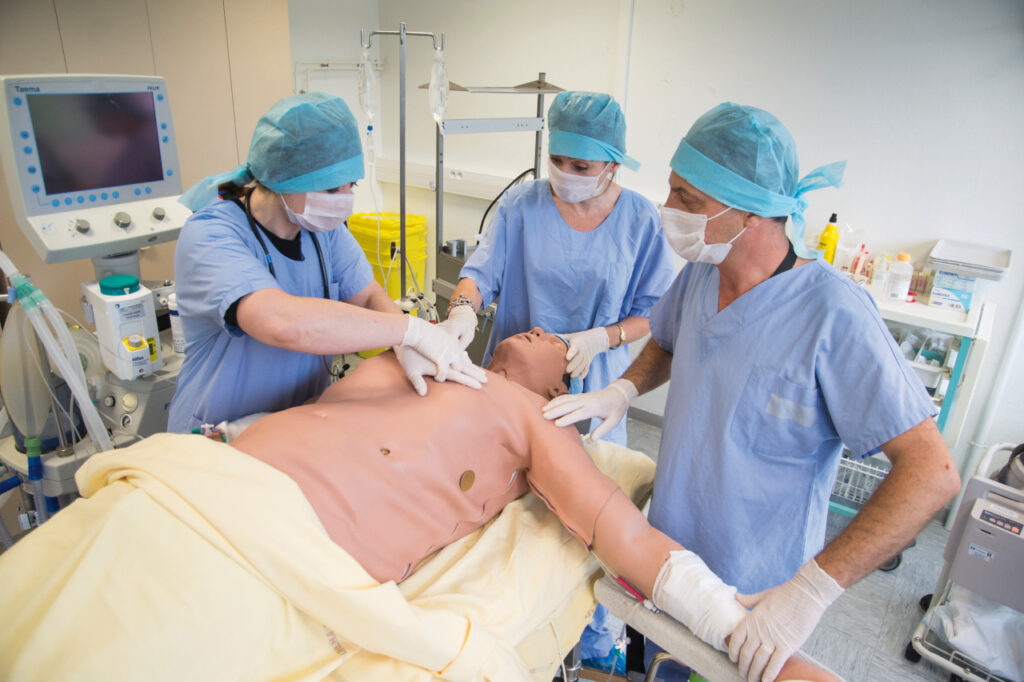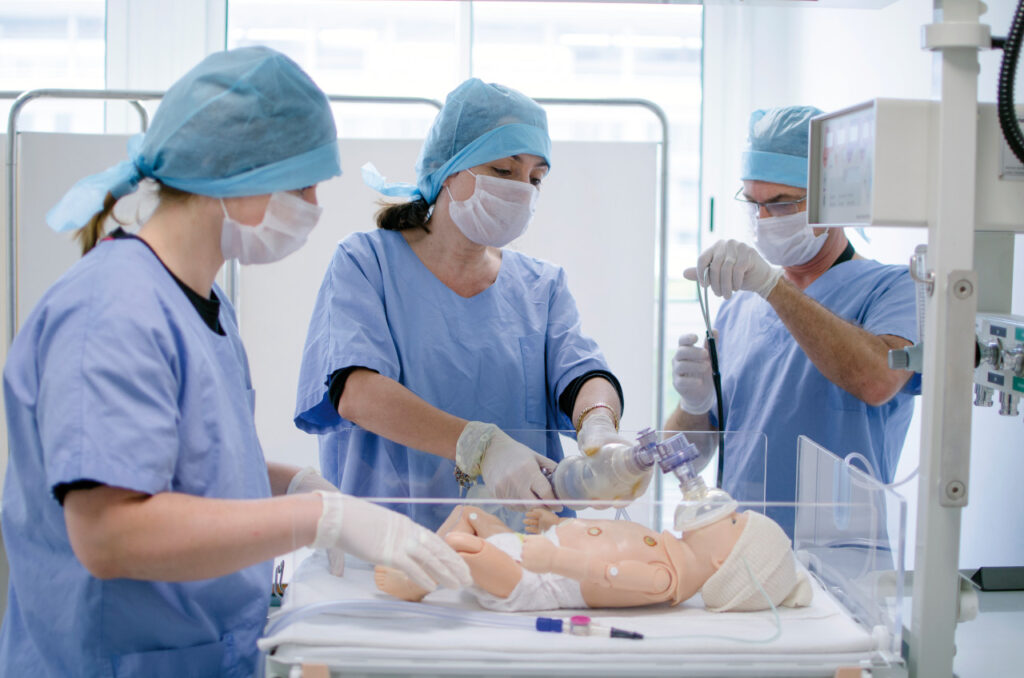[LUM#1] Patient robots
How can we help healthcare professionals get started? At the Nîmes Faculty of Medicineat the Faculté de Médecine de Nîmes, healthcare professionals learn or perfect the skills of their trade, without putting their patients at risk.

" She's in a lot of pain, doctor, it's not normal, do something ". The tension is palpable in the delivery room where Noëlle is about to have her fourth child. After three trouble-free births, she has chosen to give birth without an epidural. " Doctor, what's going on? It's taking a long time, isn't it? Is something wrong? The father's stress increases. The baby's head is already out, but his body remains stuck. Diagnosis: shoulder dystocia. An emergency situation requiring an immediate response from the nursing team. The intern, midwife and orderly working around Noëlle have just a few minutes to extract the baby.
Emergency situations
Two floors below, Istan, a young man of 30, is about to undergo an operation for appendicitis. An ordinary operation. The anaesthetists put him to sleep before leaving him in the hands of the surgeons. But suddenly the monitor screen goes haywire: the amount of CO2 exhaled by the young man increases abnormally, and his temperature soars. Istan was suffering from malignant hyperthermia, a rare and potentially fatal reaction to anesthesia. To save Istan, the anesthetists must administer the right treatment as quickly as possible...
An ordinary day in the hospital? Well, not exactly. We're not in a hospital. And Noëlle and Istan aren't just any patients. They're... robots. Welcome to the Nîmes Faculty of Medicine's simulation platform. Named SimHU Nîmes for Simulation Médicale Hospitalo-Universitaire, this exceptional facility enables medical students and other healthcare professionals to train in delicate medical procedures without risk.
" It also enables working professionals to stay at the top of their game by confronting exceptional situations," stresses Professor Michel Prudhomme, coordinator of the simulation platform. " These simulation sessions teach them not only to improve their know-how, but above all their interpersonal skills ", confides the initiator of this project. Managing a crisis situation, controlling stress and emotions, knowing how to organize effectively as part of a team: these skills are just as vital as medical gestures.

Hyper-realistic simulation
" Simulations force doctors to question themselves and their professional practices," confirms Dr. Lana Zoric, scientific manager of anesthesia simulations. The malignant hyperthermia of "Istan" was programmed by her. " We prepare the scenarios in advance and change them in real time, which is very stressful for the anaesthetists . It's also very stressful for the team who looked after "Noëlle". In the delivery room, the intern, midwife and orderly had almost forgotten that their patient was not quite like the others. " We experience it as a real birth," confides Marie-Pascale Villette. The young midwife has delivered babies before, but has never had to deal with shoulder dystocia. " At least now I know what to expect, and I'll be able to react better in a real-life situation. This simulation allows me to be a better midwife . By doing the right things, but also by optimizing teamwork. " Each simulation session is followed by a debriefing where we talk about what was done and what could have been improved, an essential time for exchanging ideas and reflecting together ", explains Valérie Courtin, the platform's educational and scientific manager for midwifery.
A guarantee of safety for patients
In addition to Noëlle and Istan, the Nîmes Faculty of Medicine also has a newborn robot. These mannequins have already passed through the hands of dozens of midwives, nursery nurses, care assistants, pediatricians, emergency physicians and anesthesiologists. And that's not all: "the simulation platform also boasts an anatomy laboratory, enabling surgeons, radiologists and physiotherapists to fine-tune their techniques ". There are no high-tech robots here: students and doctors train on human bodies from people who have donated their bodies to science. They can also perform operations on pig models, the closest physiological model to humans. This platform is one of the most comprehensive in France," emphasizes Michel Prudhomme, "and all these simulation tools enable doctors not only to maintain an excellent standard, but also to train in innovative techniques without risk to the patient.
Noëlle's delivery is over. All went well, and the medical team is relieved to see a robot baby in great shape. Istan, for his part, was saved thanks to the anesthetists' composure and rapid reaction. It's true that it's reassuring.
UM podcasts are now available on your favorite platforms (Spotify, Deezer, Apple podcasts, Amazon Music...).